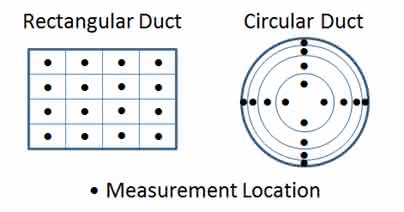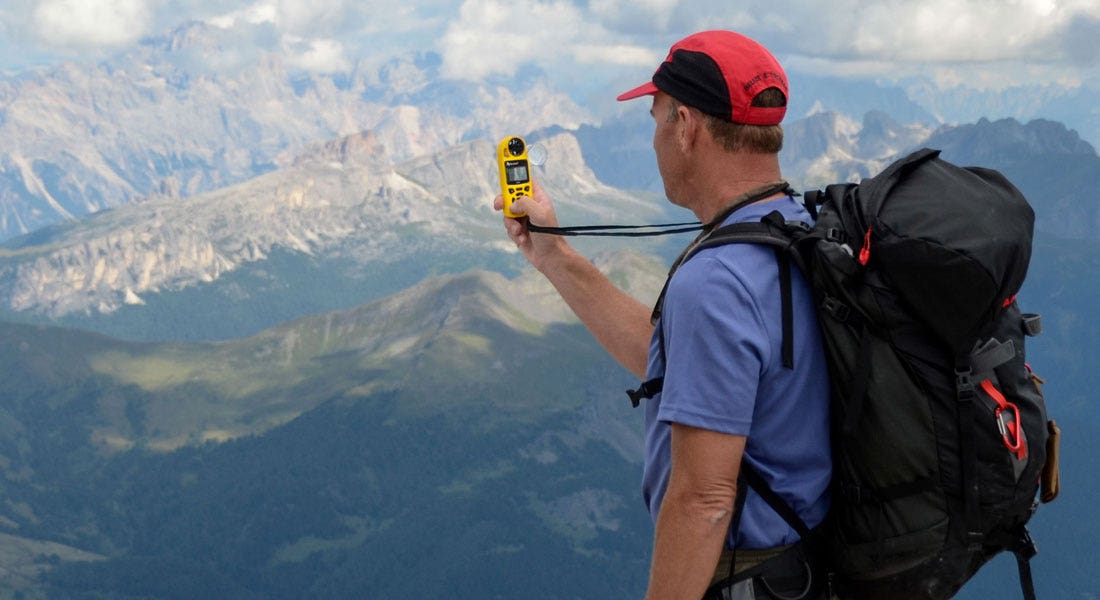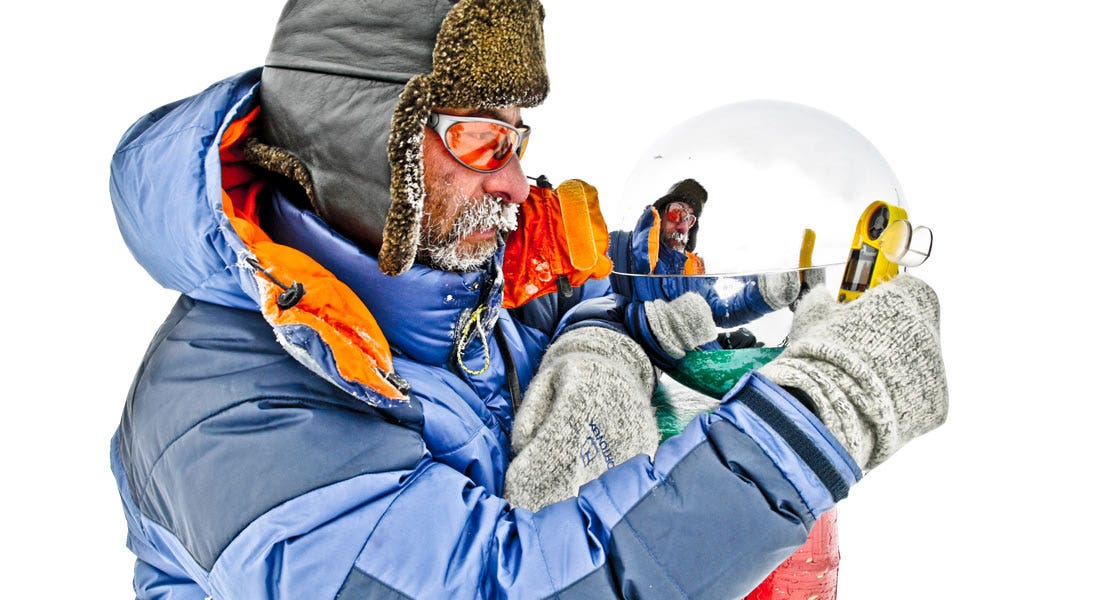Kestrel 3500 Weather Meter
Split second decisions in the field leave no time for guesswork. Get every environmental condition in seconds.
Kestrel 3500 Weather Meter Overview
| Environmental Measures | |
|---|---|
| Altitude (Barometric) | |
| Barometric Pressure | |
| Dew Point Temperature | |
| Heat Stress Index | |
| Relative Humidity | |
| Temperature | |
| Wet Bulb Temperature (Psychrometric) | |
| Wind Chill | |
| Wind Speed/Air Speed | |
| Tips For Taking Accurate Measurements | |
Split-second decisions in the field leave no time for guesswork. Get every environmental condition in seconds with the affordable, reliable Kestrel 3500. The Kestrel 3500 pocket weather meter is a rugged, multi-function wind and weather meter that measures all the environmental variables, including wind speed, to calculate accurate ballistic solutions and train your environmental insight at the range. Designed to be your trouble-free companion, the Kestrel 3500 includes a hard, rubberized slip-on cover that protects the display and impeller, even when tossed in your range bag or pack. Don’t settle for an Asian-made weather meter of questionable accuracy – step up to Kestrel for guaranteed accuracy and reliability that’s designed and built in the USA.
Note:The Kestrel 3500 in Olive Drab with NV has a night-vision preserving backlight that helps users sustain natural night vision. The NV's backlight incorporates an optical filter to reduce overall brightness and minimize blue and green spectrum light to preserve night vision. Additionally, NV backlights are much dimmer than standard backlights, making them more difficult to detect with the naked eye in night operations. This backlight appears soft greyish pink, not red, and is still in the visible spectrum, and is not compatible with night-vision equipment.
It takes 30 to 45 minutes for the average eye to adapt to darkness and maximize night vision. Even a short burst of white, yellow, green, or blue light "bleaches out" the rod cell photoreceptors in the eye and causes night blindness until the entire adaptation process can occur again. Light in the red spectrum does not cause this "bleaching out," preventing night blindness and night vision fatigue.
Kestrel Weather & Environmental Meters are designed & manufactured in the U.S.A and are backed by our 5-year warranty. Innovatively designed for stability and accuracy in abrupt condition changes. Rugged and durable, Kestrels are drop-tested, waterproof, and designed to float in water.
Engraving Note: Please ensure everything is spelled correctly, as your engraved product cannot be returned. All sales are final on engraved products. Add 2 business days to all engraving orders.
- 3-Button Control
- Backlight blue white
- Data Hold Function
- Date & Time
- Drop-Tested to MIL-STD-810G
- Field Humidity Calibration/Correction Routine
- Hard Slip-On Protective Cover
- High Contrast, Sunlight Readable Monochrome LCD Display
- Minimum/Maximum/Average Reading
- Pressure Sensor
- Relative Humidity Sensor
- Temperature Sensor (Patented External Isolated)
- Waterproof to IP67 (3'/1M for 30 minutes)
- Battery - 1 x CR2032
- Certificate Of Conformity (Spec Sheet)
- Instructions
- Lanyard
- Protective Cover - Hard Slip-on
| SENSORS | |||||||||||||
|---|---|---|---|---|---|---|---|---|---|---|---|---|---|
| SENSORS | 1 0 0 0 |
2 0 0 0 |
2 5 0 0 |
3 0 0 0 |
3 5 0 0 |
3 5 0 0 D T |
3 5 5 0 F W |
3 5 5 0 A G |
ACCURACY (+/-)* |
RESOLUTION | SPEC. RANGE | OP. RANGE | NOTES |
| Wind Speed | Air Flow | • | • | • | • | • | • | • | • | Larger of 3% of reading, least significant digit or 20 ft/min |
0.1 m/s 1 ft/min 0.1 km/h 0.1 mph 0.1 knots 1 B* 0.1 F/S* |
0.6 to 40.0 m/s 118 to 7,874 ft/min 2.2 to 144.0 km/h 1.3 to 89.5 mph 1.2 to 77.8 knots 0 to 12 B* 2-131.2 F/S* |
0.6 to 60.0 m/s 118 to 11,811 ft/min 2.2 to 216.0 km/h 1.3 to 134.2 mph 1.2 to 116.6 knots 0 to 12 B* 2-196.9 F/S* |
1 inch|25 mm diameter impeller with precision axle and low-friction Zytel® bearings. Startup speed stated as lower limit, readings may be taken down to 0.4 m/s | 79 ft/min | 1.5 km/h | .9 mph | .8 kt after impeller startup. Off-axis accuracy -1% @ 5º off-axis; -2% @ 10º; -3% @ 15º. Calibration drift < 1% after 100 hours use at 16 MPH | 7 m/s. Replacement impeller (NK PN-0801) field installs without tools (US Patent 5,783,753). Wind speed calibration and testing should be done with triangle on impeller located at the top front face of the Kestrel. *F/S only in Ballistics units. Beaufort not available in Ballistics units. |
| Ambient Temperature | • | • | • | • | • | • | • |
0.9 °F 0.5 °C |
0.1 °F 0.1 °C |
-20.0 to 158.0 °F -29.0 to 70.0 °C |
14.0.0 to 131.0 °F -10.0 to 55.0 °C |
Hermetically sealed, precision thermistor mounted externally and thermally isolated (US Patent 5,939,645) for rapid response. Airflow of 2.2 mph|1 m/s or greater provides fastest response and reduction of insolation effect. Calibration drift negligible. Thermistor may also be used to measure temperature of water or snow by submerging thermistor portion into material -- remove impeller prior to taking submerged measurements and ensure humidity sensor membrane is free of liquid water prior to taking humidity-based measurements after submersion. | |
| Relative Humidity | • | • | • | • | • | 3.0 %RH | 0.1 %RH |
5 to 95% non-condensing |
0 to 100% | Polymer capacitive humidity sensor mounted in thin-walled chamber external to case for rapid, accurate response (US Patent 6,257,074). To achieve stated accuracy, unit must be permitted to equilibrate to external temperature when exposed to large, rapid temperature changes and be kept out of direct sunlight. Calibration drift +/- 2% over 24 months. Humidity sensor may be recalibrated at factory or in field using Kestrel Humidity Calibration Kit (NK PN-0802). | |||
| Pressure | • | • | • | • | • |
1.5hPa|mbar 0.044 inHg 0.022 PSI |
0.1 hPa|mbar 0.01 inHg 0.01 PSI |
25°C/ 77°F 750-1100 hPa|mbar 22.15-32.48 inHg 10.88-15.95 PS |
0.30 to 48.87 inHg 10.0 to 1654.7 hPa|mbar 0.14 to 24.00 PSI and 14.0 to 131.0 °F -10.0 to 55.0 °C |
Monolithic silicon piezoresistive pressure sensor with second-order temperature correction. Pressure sensor may be recalibrated at factory or in field. Adjustable reference altitude allows display of station pressure or barometric pressure corrected to MSL. Kestrel 4200 displays station pressure on a dedicated screen. Kestrel 2500 and 3500 display continuously updating three-hour barometric pressure trend indicator: rising rapidly, rising, steady, falling, falling rapidly. Kestrel 4000 series displays pressure trend through graphing function. PSI display on Kestrel 4000 series only. | |||
| Compass | • | • | 5° |
1° 1/16th Cardinal Scale |
0 to 360° | 0 to 360° | 2-axis solid-state magnetoresistive sensor mounted perpendicular to unit plane. Accuracy of sensor dependent upon unit's vertical position. Self-calibration routine eliminates magnetic error from batteries or unit and must be run after every full power-down (battery removal or change). Readout indicates direction to which the back of the unit is pointed when held in a vertical orientation. Declination/variation adjustable for True North readout. | ||||||
| CALCULATED MEASUREMENTS | |||||||||||||
| MEASUREMENT | 1 0 0 0 |
2 0 0 0 |
2 5 0 0 |
3 0 0 0 |
3 5 0 0 |
3 5 0 0 D T |
3 5 5 0 F W |
3 5 5 0 A G |
ACCURACY (+/-)* |
RESOLUTION | SPEC. RANGE | SENSORS EMPLOYED | NOTES |
| Altitude | • | • | • | • | • |
typical: 23.6ft/7.2m max: 48.2ft/14.7m |
1ft 1m |
typical: 750 to 1100 mBar max: 300 to 750 mBar |
Pressure User Input (Reference Pressure) | Height above Mean Sea Level ("MSL"). Temperature compensated pressure (barometric) altimeter requires accurate reference barometric pressure to produce maximum absolute accuracy. Both accuracy specs corresponds to a reference pressure anywhere from 850 to 1100 mBar. | |||
| Barometric Pressure | • | • | • | • | • |
0.07 inHg 2.4 hPa|mbar |
0.01 inHg 0.1 hPa|mbar |
Refer to Ranges for Sensors Employed | Pressure User Input (Reference Altitude) | Air pressure that would be present in identical conditions at MSL. Station pressure compensated for local elevation provided by reference altitude. Requires accurate reference altitude to produce maximum absolute accuracy | |||
| Delta T | • | • |
3.2 °F 1.8 °C |
0.1 °F 0.1 °C |
Refer to Ranges for Sensors Employed |
Temperature Relative Humidity Pressure |
Difference between dry bulb temperature and wet bulb temperature. When spraying, indicates evaporation rate and droplet lifetime. Safe range for pesticide spraying is 4 to 16 °F / 2 to 9 °C. | ||||||
| Dew Point | • | • | • | • | • |
3.4 °F 1.9 °C |
0.1 °F 0.1 °C |
15 to 95 % RH Refer to Range for Temperature Sensor |
Temperature Relative Humidity | Temperature that a volume of air must be cooled to at constant pressure for the water vapor present to condense into dew and form on a solid surface. Can also be considered to be the water-to-air saturation temperature. | |||
| Heat Index | • | • | • | • |
7.1°F 4.0°C |
0.1 °F 0.1 °C |
Refer to Ranges for Sensors Employed | Temperature Relative Humidity | Perceived temperature resulting from the combined effect of temperature and relative humidity. Calculated based on NWS Heat Index (HI) tables. Measurement range limited by extent of published tables | ||||
| Temperature Humidity Index - THI (NRC) | • |
1.5°F 0.8°C |
0.1 °F 0.1 °C |
Refer to Ranges for Sensors Employed | Temperature Relative Humidity | ||||||||
| Temperature Humidity Index - THI (Yousef) | • |
2.3°F 1.3°C |
0.1 °F 0.1 °C |
Refer to Ranges for Sensors Employed | Temperature Relative Humidity | ||||||||
| Wet Bulb Temperature - Psychrometric | • | • | • | • |
1.6 °F 0.9 °C |
0.1 °F 0.1 °C |
Refer to Ranges for Sensors Employed |
Temperature Relative Humidity Pressure |
Temperature indicated by a sling psychrometer. Due to nature of the psychrometric ratio for a water-air system, this approximates the thermodynamic wet-bulb temperature. The thermodynamic wet-bulb temperature is the temperature a parcel of air would have if cooled adiabatically to saturation temperature via water evaporating into it. | ||||
| Wind Chill | • | • | • | • | • | • |
1.6 °F 0.9 °C |
0.1 °F 0.1 °C |
Refer to Ranges for Sensors Employed |
Wind Speed Temperature |
Perceived temperature resulting from combined effect of wind speed and temperature. Calculated based on the NWS Wind Chill Temperature (WCT) Index, revised 2001, with wind speed adjusted by a factor of 1.5 to yield equivalent results to wind speed measured at 10m above ground. Measurement range limited by extent of published tables. | ||
| ADDITIONAL SPECIFICATIONS | |||||||||||||
| MEASUREMENT | 1 0 0 0 |
2 0 0 0 |
2 5 0 0 |
3 0 0 0 |
3 5 0 0 |
3 5 0 0 D T |
3 5 5 0 F W |
3 5 5 0 A G |
NOTES | ||||
| Display & Backlight | • | • | • | • | • | • | Reflective 3 1/2 digit LCD. Digit height 0.36 in / 9 mm. Aviation green electroluminescent backlight. Manual activation with auto-off | ||||||
| • | • | Reflective 5 digit LCD. Digit height 0.36 in / 9 mm. Choice of aviation green or visible red (NV models only) electroluminescent backlight. Manual activation with auto-off. | |||||||||||
| Response Time & Display Update | • | • | • | • | • | • | • | • | All measurements except those based on relative humidity respond accurately within 1 second. Relative humidity and all measurements which include RH in their calculation may require as long as 1 minute to fully equilibrate to a large change in the measurement environment. Display updates every 1 second. | ||||
| Max/Avg Wind | • | • | • | • | • | • | • | • | One-button clear and restart of Max Wind Gust and Average Wind measurement. | ||||
| Data Upload & Bluetooth® Data Connect Option | • | • |
Requires optional PC interface (USB or RS-232) or Bluetooth data transfer option and provided software. Bluetooth Data Transfer Option: Adjustable power consumption and radio range from up to 30 ft | 9 meters. Individual unit ID and 4-digit PIN code preprogrammed for easy identification and data security when pairing and transmitting. Employs Bluetooth Serial Port Protocol for data transmission. |
||||||||||
| Clock / Calendar | • | • | • | • | • | • | • | • | Real-time hours:minutes clock. | ||||
| Auto Shutdown | • | • | • | • | • | • | • | • | After 45 minutes of no key presses. | ||||
| Languages | English | ||||||||||||
| Certifications | • | • | • | • | • | • | • | • | CE certified, RoHS and WEEE compliant. Individually tested to NIST-traceable standards (written certificate of tests available at additional charge). | ||||
| Origin | • | • | • | • | • | • | • | • | Designed and manufactured in the USA from US and imported components. Complies with Regional Value Content and Tariff Code Transformation requirements for NAFTA Preference Criterion B. | ||||
| Battery Life | • | • | • | • | • | • | • | • | CR2032, one, included. Average life, 300 hours. Battery life reduced by backlight use in 2000 to 3500 models. | ||||
| Shock Resistance | • | • | • | • | • | • | • | • | MIL-STD-810g, Transit Shock, Method 516.6 Procedure IV; unit only; impact may damage replaceable impeller. | ||||
| Sealing | • | • | • | • | • | • | • | • | Waterproof (IP67 and NEMA-6). | ||||
| Operational Temperature Limits | • | • | • | • | • | • | • | • | 14° F to 131° F | -10 °C to 55 °C Measurements may be taken beyond the limits of the operational temperature range of the display and batteries by maintaining the unit within the operational range and exposing it to the more extreme environment for the minimum time necessary to take reading. | ||||
| Storage Temperature | • | • | • | • | • | • | • | • | -22.0 °F to 140.0 °F | -30.0 °C to 60.0 °C. | ||||
| Size & Weight | • | • | • | • | • | • | • | • | 4.8 x 1.9 x 1.1 in / 12.2 x 4.8 x 2.8 cm, 3.6 oz / 102 g (including slip-on cover). | ||||
* NOTE: Accuracy calculated as uncertainty of the measurement derived from statistical analysis considering the combined effects from primary sensor specifications, circuit conversions, and all other sources of error using a coverage factor of k=2, or two standard deviations (2Σ).
Models & SKUs:
- Kestrel 3500: 0835
- Kestrel 3500 with Night Vision: 0835NV
















